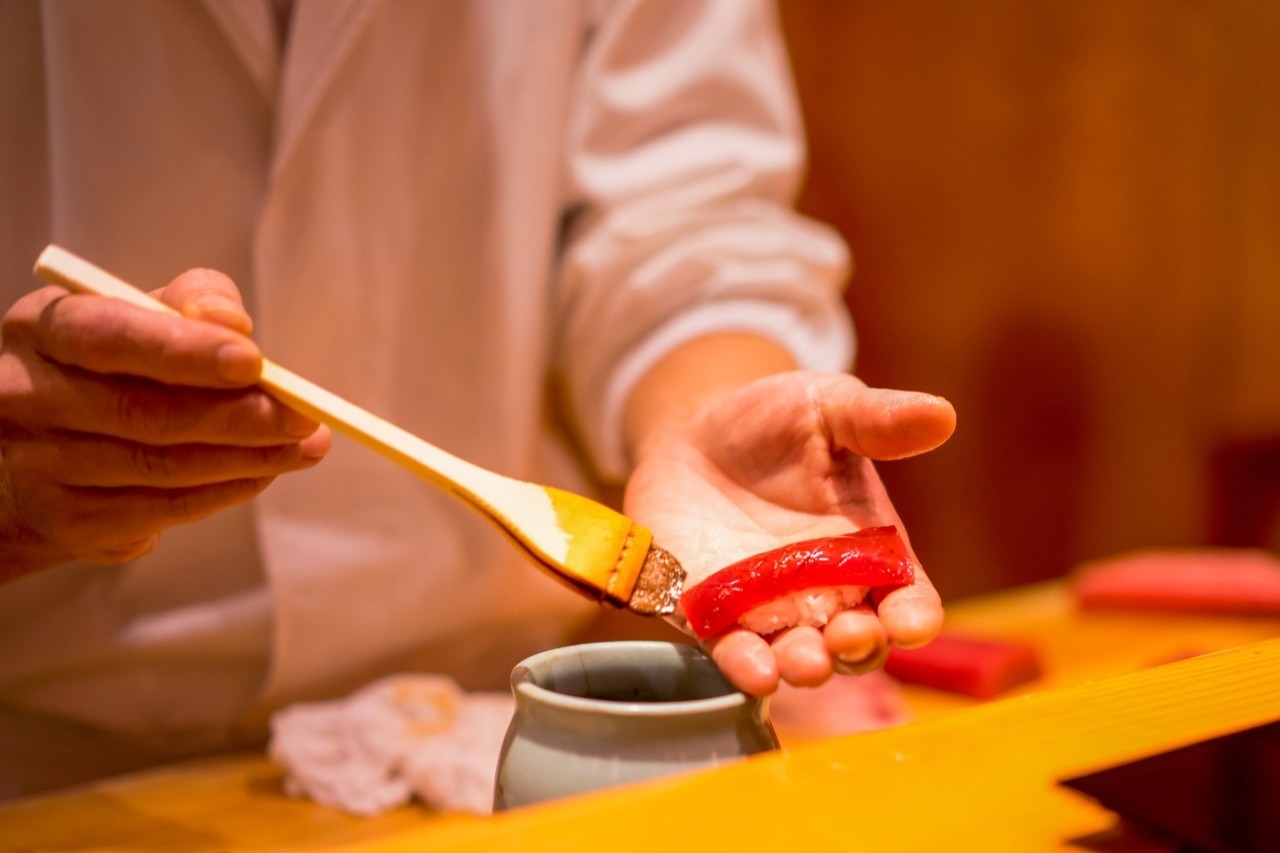Where to Find the Best Sushi in Tokyo

There’s a rule of thumb worth remembering when dining out in Tokyo: appearances can be deceiving. That sparse, shoebox-sized restaurant at a subway station entrance? It’s actually a Michelin-starred eatery. The six-seater counter wedged between two nondescript stores? Its head chef has decades of experience wielding a yanagiba, or sushi knife, with precision.
This juxtaposition exists in Japan because a great sushi restaurant is dependent on one thing – the itamae, or chef, behind the counter. Training for a minimum of 10 years, it’s the expertise of individual sushi masters that makes each eatery special. Size (and exterior) doesn’t matter when choosing an exceptional sushi restaurant – here are some that prove it.
Sukiyabashi Jiro

Jiro Ono has obsessively devoted eight decades to sushi making and his extraordinary focus hasn’t gone unnoticed. Netflix dedicated a documentary, Jiro Dreams of Sushi, to the 94-year-old’s life and Michelin has previously awarded his eatery, Sukiyabashi Jiro. His 10-person-capacity restaurant isn’t the kind you’d stumble upon – it’s unceremoniously tucked into a clinical-looking corner of Ginza subway station. Ono himself is notoriously frosty, but his virtuosity with his half-hour-long omakase (chef’s choice) is second-tonone – he’s consistently regarded as the greatest sushi chef alive. But to book, you need the right connections: ask your hotel concierge if they can snag you an exclusive table.
4-2-15, Tsukamoto Sogyo Building, Basement 1st Floor, Chuo City, Tokyo; +81 3 3535 3600
Sushisho Masa
In contrast to Ono’s brisk 30-minute spectacle, Masakatsu Oka – the master behind this seven-seater in the basement of a characterless Roppongi building – prefers to have his clientele take their time. And you’ll want a few more minutes on the clock; the omakase, served on a sleek, uncluttered cypress counter with fish gifted to guests in tiny wooden boxes, is often 40-dishes strong. Eschewing the ‘serious’ sushi chef trope, Oka is welcoming and the wait staff also speak English, which helps demystify the oft-intimidating affair.
4-1-15 Nishiazabu, B1F Seven Nishiazabu, Minato, Tokyo; +81 3 3499 9178
Sushi Masuda
With two Michelin stars, six seats and scaffolded by the knowledge of head chef Rei Masuda, a former protégé of Jiro Ono, Masuda is a popular alternative to the hard-to-secure Sukiyabashi Jiro. Masuda is chatty (unlike his mentor) and infinitely skilled, giving the guests at his counter seats both personal attention and care, while crafting rice and fish with precision and panache.
5-8-11, Minami Aoyama, Minato, Tokyo; +81 3 6418 1334
Isana Sushi Bar

A decade in London sharpened not only the talent of chef Junichi Onuki, but also informed his idea about what makes an unforgettable sushi experience. He’s the opposite of stony-faced and serious when it comes to the customers who fill the seven counter seats and two tables at Isana, on the bottom floor of Hotel S in Roppongi. The seafood is sourced every morning from the Toyosu Market, so everything Onuki serves is of the utmost freshness.
1-11-6 Nishiazabu, Minato, Tokyo; +81 3 6434 9194
Ichibancho Teruya
Having spent his formative sushi training years in New York, head chef Teruya Iida is fluent, friendly and forthcoming with his insights into the elite world of sushi, giving English-speaking visitors a unique experience usually reserved for those fluent in Japanese. The influence of Sushisho Saito, where he also trained, shows too; Iida serves his dishes ‘sushi sho’ style, swerving from traditional edomae style in a few delicious ways by often using aged or cured fish and varying the vinegar on his nigiri.
15-3 Ichibancho, Chiyoda, Tokyo; +81 3 3239 8363



